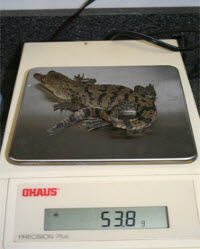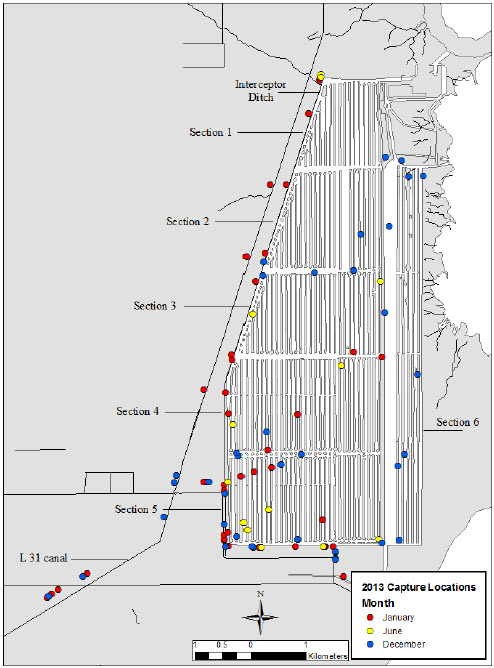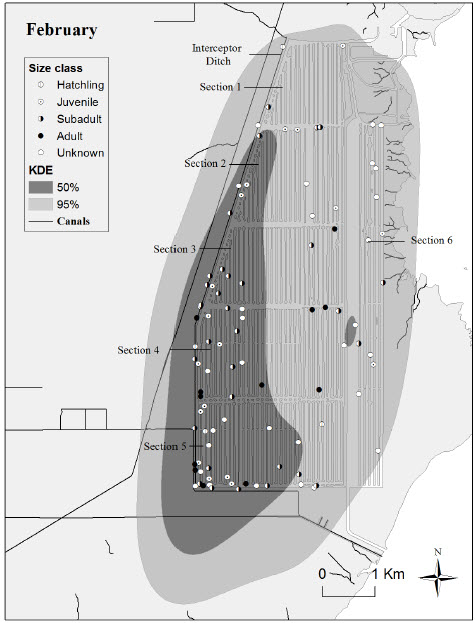 The foundation of the crocodile program is the gathering of data which is used to assess the long-term status and health of the crocodile population at Turkey Point. State and federal Wildlife agencies grant Turkey Point the permits that allow biologists to actually work with endangered or threatened species like the crocodiles. Data gathered during the various surveys conducted each year is submitted annually in a report. Over time biologists can analyze the data and look for trends that can help predict certain aspects of the crocodile's life, such as overall population size, growth and survival rates, and distribution.
The foundation of the crocodile program is the gathering of data which is used to assess the long-term status and health of the crocodile population at Turkey Point. State and federal Wildlife agencies grant Turkey Point the permits that allow biologists to actually work with endangered or threatened species like the crocodiles. Data gathered during the various surveys conducted each year is submitted annually in a report. Over time biologists can analyze the data and look for trends that can help predict certain aspects of the crocodile's life, such as overall population size, growth and survival rates, and distribution.
Every year the program sets out to capture any size class crocodile, and various biometric data is then collected from each animal. The goal is to capture animals that have been captured and marked in the past (re-captures). Data from the initial time of capture, such as length, weight, and location can be compared with the re-capture data, which will show the animal's rate of growth. Data from a crocodile that was initially marked as a hatchling and later recaptured as a juvenile or adult is particularly important.
Figure 1. American crocodile capture locations at Turkey Point Power Plant from the 2012 January, April and November capture events.
The distribution of the crocodiles on the property can be determined by several routine truck and airboat surveys. GPS waypoints and size estimates are taken whenever a crocodile is sited during a survey. By understanding the distribution of crocodiles in the cooling canals of Turkey point, biologists can help save critical habitat or create new areas for animal reproduction.
Figure 2. Kernel Density Map of crocodile locations at Turkey Point Power Plant during August 2012 spotlight survey.
The Turkey Point crocodile program combines efforts and resources with other biologists in the state. The University of Florida crocodile research team is the institution in charge of the non-bias surveys for FPL, as well as the production of scientific papers.
The number of nests located since the start of the program. Data like this helps determine recruitment rates of mature females in a population. Nest locations have also been found to be consistent, with females visiting the same spots year after year.
Bibliography
- Frank J. Mazzotti1, and Others, Annual Report 2012.
- American Crocodile Monitoring Program Turkey Point.
Fort Lauderdale Research and Education Center University of Florida & U.S. Geological Survey Southeast Ecological Science Center.

